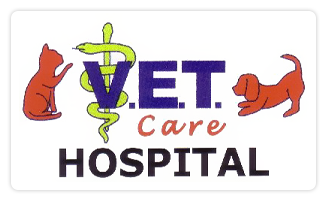Happy Holidays! The official holiday season is prime time for foodies: those mouthwatering seasonal feasts are definitely worth coming home for. Our furry pals are also very interested in anything we create or consume. This is a perfect time to go over some of the nuances of cooking for your pet. A local Burleson, TX veterinarian provides some perspective on this below.
What Foods Can You Prepare For Your Pet?
Every kind of animal is unique, so you’ll want to ask your veterinarian for particular guidance. The answer may change over time as your furry friend ages and/or experiences changes in their health. For example, you wouldn’t want to feed fish to a cat with thyroid problems since the iodine would be bad for her.
Giving Your Pets Meat
Generally, most kinds of meat, fish, or poultry are acceptable for dogs and cats as long as they are cooked and unseasoned. You also have to cut out the fat, bones, and skin. Cooked bones become incredibly brittle and can snap off into jagged bits that are extremely dangerous for your pet to swallow.
There are several exceptions here, though. Organ meats, including kidney and liver, should be offered sparingly. Once in a while, they’re fine, but too much can cause vitamin A toxicity. Meats that are heavy in fat or salt, such sausage and bacon, should also be limited. ( Sorry, Fido!)
Ask your Burleson, TX vet for more information.
What Vegetables And Fruits Dogs Can Eat?
Your pet’s diet shouldn’t consist just of meat. Through their prey, even hypercarnivores consume traces of other foods. Together with vitamins, minerals, and fiber, a nutritious diet should include the right amounts of fat, protein, and water.
Here are some of the safe ones:
- Apples
- Bananas
- Blackberries
- Blueberries
- Cantaloupe
- Carrots
- Cranberries
- Cucumbers
- Kiwis
- Mangoes
- Oranges
- Peas
- Pears
- Pineapples
- Raspberries
- Spinach
- Strawberries
- Sweet Potatoes
- Watermelon
Before giving your pet any fruits or vegetables, always remove seeds and pips. Some might have to be shredded or even sliced into tiny bits.
What Other Types Of Foods Could Fido And Fluffy Eat?
Some of the other things that your pet can eat safely are eggs, plain yogurt, and cottage cheese. These should, however, be presented in modest quantities. Fido would most likely be more than pleased to assist you in polishing off that block of extra sharp cheddar, but you don’t want to overindulge him!
How Should I Choose Pet Recipes?
You will find many ideas for your animal friend’s foods online. These are clearly not one size fits all, though. A Chihuahua’s ideal diet would not be right for a St. Bernard! Discuss your pet’s dietary requirements with your veterinarian. As for recipes, stick with those recommended by reliable sources or veterinarians. Influencers create some enticing ones, but you should make sure these pass muster with your veterinarian.
Which Foods Dogs Should Not Eat?
Many of the foods we eat are unsafe for our four-legged friends. Some of these include garlic, onions, scallions, and chives. Generally speaking, anything with a bulb should be considered poisonous to your pet. Other dangerous foods include chocolate; alcohol; pitted fruits; nuts; caffeine; grapes, currants, and raisins; raw meat, dough, and yeast; and meat on the bone.
Some foods are likewise only safe in modest amounts. Organ meats—such as kidney and liver—fit this group, as discussed above. Also falling into this group are foods like cauliflower and broccoli since they might induce gas.
Ask your Burleson, TX vet for more information on this.
Plan A Visit To Our Burleson, TX Pet Clinic
Have questions regarding the diet or care of your pet? Get in touch with us right now—your Burleson, TX pet hospital!
